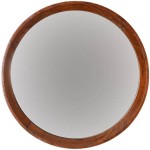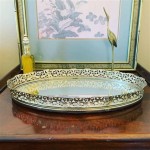How To Do Screen Mirroring On Philips Smart TV
Screen mirroring allows users to display the content of a smartphone, tablet, or computer screen directly onto a larger display, such as a Philips Smart TV. This functionality offers various benefits, from sharing photos and videos with a larger audience to enjoying mobile games on a bigger screen. This article provides a comprehensive guide to screen mirroring on a Philips Smart TV, outlining different methods and troubleshooting common issues.
Using Miracast for Screen Mirroring
Miracast is a widely adopted wireless display standard that facilitates direct screen mirroring between devices. Many Philips Smart TVs have built-in Miracast support, making it a convenient option for sharing screens. To utilize Miracast, ensure both the Philips Smart TV and the source device (smartphone, tablet, or computer) are Miracast-enabled.
On the Philips Smart TV, navigate to the input source menu and select the screen mirroring or Miracast option. This action puts the TV into a receptive mode, ready to connect with a source device. On the source device (e.g., an Android smartphone), access the screen mirroring settings, often found within the display or connection settings. The device should then scan for available displays and list the Philips Smart TV. Selecting the TV initiates the connection process. Upon successful connection, the source device's screen will be mirrored on the television.
Screen Mirroring from Windows Devices
Mirroring from a Windows computer to a Philips Smart TV can be achieved by utilizing the "Connect" feature. Activate the "Connect" app on the Windows PC and select the Philips Smart TV from the list of available displays. The TV should show a prompt confirming the connection request. Depending on the specific Windows version and Philips TV model, adjustments might be necessary to optimize display settings like resolution and scaling.
Utilizing Chromecast for Screen Mirroring
While not all Philips Smart TVs come with built-in Chromecast, those using the Android TV operating system often have it integrated. This provides another effective method for screen mirroring. Ensure both the sending device and the Philips TV are connected to the same Wi-Fi network. Open a Chromecast-compatible app on the source device (e.g., YouTube, Netflix) and tap the cast icon. Select the Philips Smart TV from the list of available devices. The selected content from the app will then stream or mirror on the television.
Screen Mirroring from Apple Devices with AirPlay 2
Some Philips Smart TVs support Apple's AirPlay 2 protocol, which allows seamless screen mirroring and streaming from Apple devices such as iPhones, iPads, and Macs. Check the TV's specifications to confirm AirPlay 2 compatibility. If supported, ensure both the Apple device and the Philips TV are on the same Wi-Fi network. Open the Control Center on the Apple device and select "Screen Mirroring." Choose the Philips Smart TV from the list of available devices. Enter the AirPlay code displayed on the TV, if prompted. The Apple device's screen will then be mirrored on the television.
Troubleshooting Common Screen Mirroring Issues
Occasionally, users might encounter issues with screen mirroring. Some common problems include connection failures, lagging video, and audio syncing problems. If encountering connection problems, ensure both the source device and the Philips Smart TV are on the same Wi-Fi network and that the Wi-Fi signal is strong. Restarting both devices can often resolve temporary glitches. For lag or audio sync issues, check for software updates on both the source device and the TV. Reducing the distance between the devices might also improve performance.
Checking Network Compatibility and Connectivity
Stable network performance is crucial for seamless screen mirroring. Confirm that both the source device and the Philips Smart TV are connected to the same Wi-Fi network and that the network provides sufficient bandwidth. Using a 5GHz Wi-Fi network, if available, can help improve performance, especially for high-resolution content.
Updating Software and Firmware
Outdated software or firmware can sometimes lead to compatibility issues or diminished performance. Regularly check for and install software updates on the source device (smartphone, tablet, or computer). Similarly, ensure the Philips Smart TV's firmware is up to date. This can often improve compatibility and resolve known bugs that might affect screen mirroring functionality.

How Can I Wirelessly Cast Content To My Philips Tv

How To Screen Mirror Iphone On Philips Smart Tv Free App

How To Mirror Iphone Philips Smart Tv

How To Screen Mirror Iphone On Philips Smart Tv Free App

3 Effective Ways To Screen Mirroring Philips Tv

How To Mirror Iphone Philips Tv

How To Screen Mirror Iphone On Philips Smart Tv Free App

How To Mirror Android Philips Tv

3 Effective Ways To Screen Mirroring Philips Tv

How To Screen Mirror Iphone Or Ipad Philips Smart Tv Wireless Without Apple








